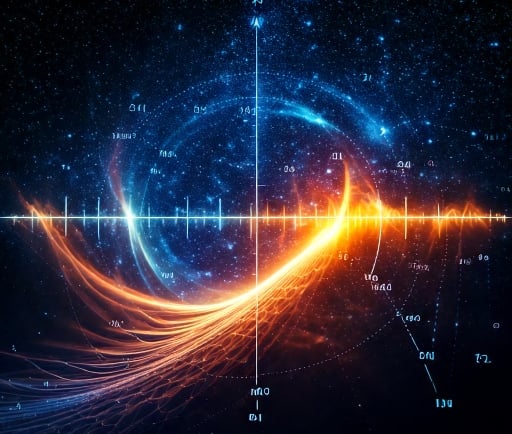Wave Equations: The Dynamics of Energy Through Time and Space


Introduction to Wave Equations
The study of wave equations serves as a fundamental insight into how energy is propagated throughout the universe. These equations describe the behavior of waves, including light waves, sound waves, and even other forms of energy. By mathematically modeling these phenomena, we can better understand not only their properties but also how they evolve over time and across varying spatial dimensions.
The Nature of Waves
Waves are disturbances that transfer energy from one location to another. The quintessential characteristics of waves include wavelength, frequency, amplitude, and velocity. Each of these properties plays a critical role in defining how energy travels. In essence, when we analyze wave equations, we begin to uncover the underlying principles that govern energy movement in different mediums.
Applications of Wave Equations in Light Waves
One of the most profound implications of wave equations is their application in understanding light waves. Light, as a form of electromagnetic radiation, travels through a vacuum as well as through various media, such as air and glass. The wave equation for light, often represented in a simplified form, can illustrate various optical phenomena such as reflection, refraction, and diffraction.
By employing the wave equation, we can explore how light interacts with materials. This interaction reveals critical information regarding energy transfer, allowing us to harness various technologies ranging from fiber-optic communications to imaging systems. Hence, the mathematical approach behind wave equations forms the backbone of several scientific and engineering applications.
Evolution of Energy Through Space and Time
In addition to understanding waves in a static context, wave equations facilitate the exploration of how energy evolves through time and space. The dynamics of wave propagation reveal that changes in energy transport are not simply linear; they involve complex interactions influenced by the environment, frequencies, and wave amplitudes.
For instance, signals transmitted through waves can experience distortions due to the medium, affecting not only their speed but also their overall energy distribution. Thus, the study of wave equations highlights the delicate balance between energy transfer mechanisms and the factors influencing them over time.
Conclusion
In summary, the exploration of wave equations unveils a comprehensive understanding of energy propagation in the universe. From light waves to sound waves, and through various mediums, these equations empower us to analyze interactions that form the very foundation of many physical phenomena. As we delve deeper into the mathematical principles and physical implications of wave equations, we enhance our ability to predict and manipulate energy evolution across time and space.
